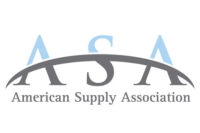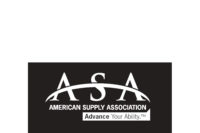The U.S. Economy has continued an upward trend for the second year in a row. After adjusting for inflation, the Gross Domestic Product (GDP) increased 2.9%. The average unemployment rates are at a 50-year low of 3.6% as of June 2019. Inflation has been ticking upward while the Federal Reserve has been trying to keep it under control. In the meantime, the GDP deflator (a broad measure of the overall economy) increased by only 2.2. The Federal Reserve raised rates four times in 2018, but they do not anticipate raising rates for the rest of 2019 amid slower economic growth. (When the Fed raises rates, banks are less incentivized to lend, since they are earning more to park their cash in reserves.)
Each month, the U.S. Department of Commerce Bureau of Labor Statistics reports on two key inflation indicators: The Consumer Price Index (CPI) and the Producer Price Index (PPI). These indexes are the two most important measurements of retail and wholesale inflation, respectively. Rapidly rising prices not only affect the price consumers pay, they also affect the cost businesses have to pay for materials and inventory. When replacement inventory costs more than the inventory you just sold, it can lead to inventory shortages.
-
The percentage change in real wholesale sales, which is also inflation adjusted, stood at 4.4% v.s. 5.2 % in 2018. Wholesale trade for ASA participants (not adjusted for inflation) increased to 7.3% vs. 6.6% of all wholesale trade.
-
PVF firms showed more growth than the plumbing supply firms. Although, profitability increased for all firms across the industry, PVF firms showed a higher increase in growth in comparison to other segments. Roughly half the companies who participated in the 2019 OPR were primarily PVF. (Please purchase the latest edition of the OPR and review the industry analysis on PVF firms at www.asabusinessintelligence.com to find out more.)
-
HVAC firms showed the highest profit after taxes when compared to other segments in the industry.
-
Highly profitable firms have lower operating expenses. (Profits are determined by the revenue a company earns and the amount the company spends in order to operate. Profit can be increased by increasing revenue and decreasing operating costs. Because cutting costs generally seems like an easier and more accessible way of increasing profits, managers will often be quick to choose this method.)
-
Based on annual sales volume, nearly 50% of the firms participating in the OPR belong to firms with annual sales in the range of $25-50M (19%), $50-125M (15%) and $5-10M (13%).
-
Net worth of all reporting companies increased when compared to 2018 overall net worth. Find out more on growth rates of all four segments in this year’s OPR 2019 report. (Net Worth = Total Assets – Total Liabilities.)
2019 OPR participants received an interactive financial insights tool for identifying the profitability impact of various “what-if” scenarios. This easy-to-use spreadsheet is made available to each participant (on a strictly confidential basis) and is pre-loaded with their own financial results and a comparison to industry norms. This unique interactive report, based on various assumptions, shows the profitability impact of improvements to accounts receivables, inventory turnover, fixed expenses, gross margin and sales.
2019 OPR will be interactive on the BI dashboard and the users will be able to run various manipulations such as drilling down through various levels of data and filtering the content they want to see.
> Order Your Copy
Please visit the BI Dashboard at www.asabusinessintelligence.com, or contact Ayesha Salman at 630-467-0000 ext. 212, asalman@asa.net for more information on ordering your copy of the 2019 OPR.




